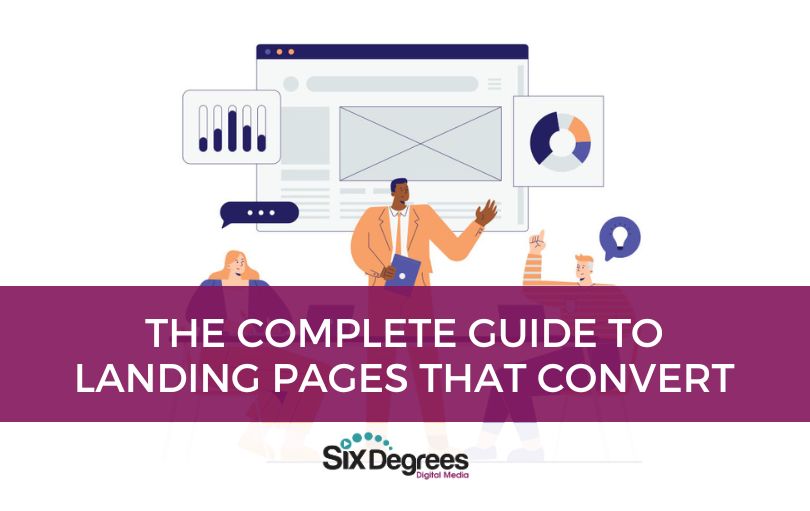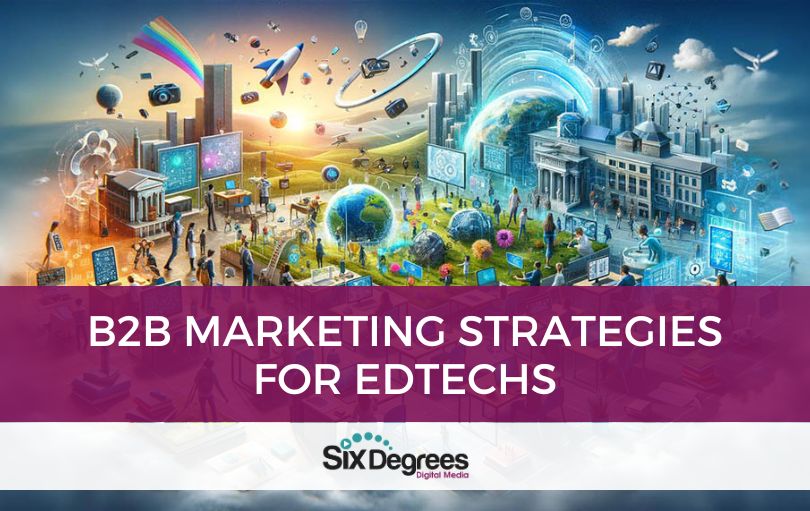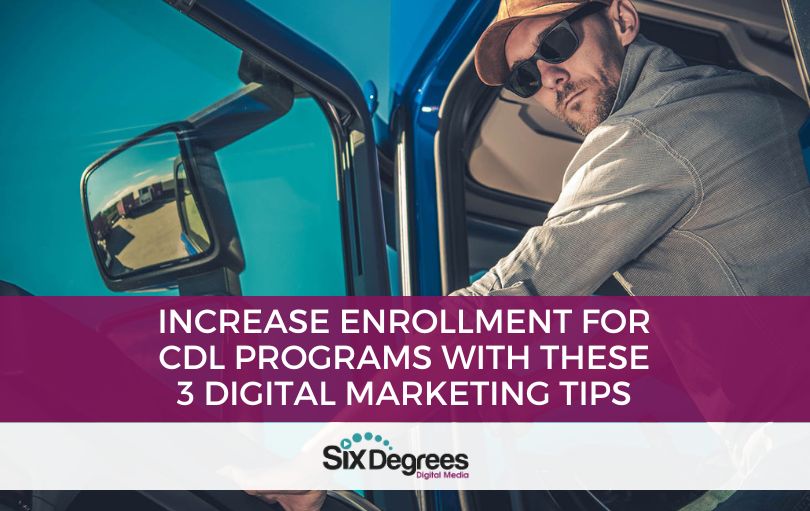
The task of creating compelling landing pages might seem daunting, whether you’re an experienced marketer or a newcomer to the digital landscape. The struggle to capture attention and inspire action from your audience is real. It’s easy to feel overwhelmed by the complexity of this task.
This blog provides a practical roadmap for designing landing pages that act as magnets, drawing in your audience and encouraging them to take that crucial step. We offer a step-by-step guide tailored for both seasoned marketers and beginners, arming you with the knowledge and strategies needed to create landing pages that not only captivate but also convert effectively.
Key Component 1: Conversion Goals
Imagine your landing page as a map, and your conversion goal as the destination. Before start the journey, you need to know where you’re headed. Defining a clear and specific conversion goal is the first step in creating a landing page that works its magic.
For your business, this could mean a number of different things, such as:
- Lead Generation: Encouraging visitors to provide their contact information in exchange for valuable content, such as eBooks, whitepapers, or newsletters.
- Product Sales: Convincing visitors to make a purchase directly from the landing page, often with special offers or promotions.
- Free Trial or Demo Sign-ups: Persuading visitors to try out a product or service by signing up for a free trial or scheduling a demo.
- Event Registration: Getting visitors to sign up for webinars, workshops, conferences, or other events hosted by the business.
- Email Subscriptions: Encouraging visitors to subscribe to the company’s email list to receive updates, promotions, and news.
- Contact Form Submissions: Prompting visitors to inquire about the company’s services or products by filling out a contact form.
- Membership or Subscription Sign-ups: Convincing visitors to become paying members or subscribers to access premium content or services.
- Social Media Engagement: Encouraging visitors to follow, like, or share the business’s social media profiles to expand their online reach.
- Request for Quotes: Getting visitors to request price quotes or estimates for services or custom products.
- Downloadable Resources: Offering downloadable resources like templates, guides, or toolkits in exchange for visitor information.
- Content Consumption: Encouraging visitors to read blog posts, watch videos, or explore other content on the website to build trust and credibility.
- Donations: Convincing visitors to contribute to a cause, nonprofit organization, or charity through the landing page.
- App Downloads: Encouraging visitors to download and install a mobile app.
- Survey Participation: Prompting visitors to take surveys or provide feedback to gather valuable insights.
- Referral Programs: Encouraging visitors to refer friends, family, or colleagues to the business in exchange for rewards or discounts.
- Account Creation: Getting visitors to create accounts on the website to personalize their experience or access exclusive features.
Remember:
Don’t flood your landing page with different conversion goals. Stick to a single goal so that you don’t split the attention of your visitors.
So, before you dive into designing your landing page, take a moment to answer this question: “What specific action do I want my visitors to take?” Once you have your destination in mind, you’re ready to map out the rest of your journey to conversion success.
In the next sections, we’ll explore how to make that journey engaging and persuasive. But remember, it all starts with a crystal-clear conversion goal.
Key Component 2: Audience Research
Now that you’ve set your conversion goal, it’s time to get to know the stars of the show – your audience. Think of it as hosting a party; you want to make sure your guests have a blast. In the world of landing pages, this means understanding your visitors inside and out.
Why Audience Research Matters:
Audience research isn’t just about gathering demographic data; it’s about tapping into the hearts and minds of your potential customers. For midsize businesses, this is where you can truly shine. You’re in the sweet spot of having enough customers to study but not so many that you’re drowning in data.
How to Get to Know Your Audience:
- Create Buyer Personas: Imagine your ideal customer. What do they do? What are their interests? What challenges do they face? Creating detailed buyer personas helps you get into your audience’s shoes.
- Analyze Analytics: Dive into your website analytics. What pages do your visitors frequent? How do they navigate your site? This data is a goldmine of insights into user behavior.
- Social Media Listening: Social platforms are like open diaries. Listen to what people are saying about your industry, products, or pain points. It’s like eavesdropping on your audience’s conversations.
- Surveys and Feedback: Ask your existing customers for feedback. Conduct surveys to understand what they love about your brand and where you can improve.
- Competitor Analysis: Take a peek at what your competitors are doing. What’s working for them? What isn’t? It can provide inspiration and reveal gaps you can fill.
Tailoring Your Landing Page
Once you’ve gathered these insights, it’s time to put them to work. Tailor your landing page to speak directly to your audience’s desires, pain points, and aspirations. If your audience is primarily concerned with saving time, emphasize how your product or service can make their lives easier. If they’re looking for value, showcase cost-effectiveness.
Remember:
The goal is to make your audience feel like you understand them better than anyone else. When they land on your page and see content that resonates with their needs, they’ll be more inclined to take that desired action.
In the next section, we’ll dive into the art of crafting compelling headlines and visuals that will keep your audience engaged and scrolling.
So, grab your audience’s attention and let’s keep this conversion party going!
Key Component: Compelling Headlines
Picture this: You’ve set the stage with a clear conversion goal, and you’ve tuned in to the rhythm of your audience. Now, it’s time to make that grand entrance with a headline and subheadline that’ll leave your visitors eager for more.
The Power of a Captivating Headline:
Your headline needs to grab attention, pique curiosity, and set the tone for what’s to come. Midsize businesses have a unique opportunity here to showcase their brand personality and stand out from the crowd.
Here are a few headline hacks:
- Be Clear and Concise: State your value proposition upfront. Visitors should know what your page is about within seconds.
- Tap into Emotions: Trigger emotional responses by addressing pain points or aspirations. Make visitors feel something.
- Highlight Benefits: Focus on what visitors will gain or solve by taking the desired action.
- Use Action Words: Incorporate action verbs that inspire action, like “Discover,” “Transform,” or “Unlock.”
The Subheadline’s Supporting Role:
The subheadline provides context and elaborates on the headline’s promise. It should give visitors a reason to stay and explore further.
Here’s how to make your subheadline shine:
- Complement the Headline: Ensure the subheadline aligns with and expands on the message introduced in the headline.
- Clarify Value: Reiterate the benefits or value your offer provides.
- Add a Unique Twist: Use the subheadline to differentiate yourself from the competition or emphasize a unique selling point.
Keep it Visually Appealing:
Remember, the visuals matter too. The way your headline and subheadline look can impact their effectiveness. Consider these design tips:
- Font and Size: Choose fonts that align with your brand’s style, and make sure they are legible. The headline should be larger and stand out.
- Color Contrast: Ensure there’s enough contrast between the text and background color to make it easy to read.
- Whitespace: Don’t overcrowd your headline and subheadline with other elements. Give them room to breathe.
Headlines can be a real playground for creativity and differentiation. So, don’t be afraid to experiment and find a voice that resonates with your audience.
In our next section, we’ll dive into the role of engaging visuals that complement your message and keep visitors scrolling. Get ready to paint a vivid picture on your landing page canvas!
The Power of Video
Among the various visual elements, video stands tall as a conversion-boosting superstar.
The Impact of Visuals on Engagement:
Visual content can convey complex ideas, evoke emotions, and keep your audience glued to your landing page. Here’s why visuals, especially video, are a game-changer:
- Storytelling: Video allows you to tell a compelling story. It can introduce your brand, showcase products in action, or share customer testimonials in a way that resonates deeply with your audience.
- Captivating Attention: In an age of short attention spans, video can capture and maintain visitor attention more effectively than text or static images.
- Information in a Snap: Videos condense information into a digestible format. It’s like serving a full-course meal in bite-sized portions.
- Personality and Branding: Video provides an excellent platform to showcase your brand’s personality, culture, and values. Midsize businesses can leverage this to create a more personal connection with their audience.
Video should enhance your message, not overwhelm it. Keep videos concise and to the point, and use them strategically where they can have the most impact.
In the next section, we’ll dive deep into persuasive copywriting, where words work in harmony with visuals to guide your visitors toward that all-important call to action.
Persuasive Copywriting:
So, what’s the secret sauce for crafting copy that converts? It’s all about understanding your audience’s pain points, desires, and motivations, and then using words that resonate with them. Here’s how:
- Address Pain Points: Your audience likely has a problem or need that brought them to your landing page. Acknowledge this pain point early in your copy to show you understand their challenge.
- Benefits Over Features: Highlight the benefits of your product or service, not just its features. Explain how it will make your visitors’ lives easier, better, or more enjoyable.
- Show, Don’t Tell: Use descriptive language that paints a vivid picture. Instead of saying, “Our software is fast,” say, “Experience lightning-fast performance that saves you precious time.”
- Create Urgency: Encourage action by creating a sense of urgency. Limited-time offers, countdowns, and phrases like “act now” can be powerful motivators.
- Social Proof: Mention customer testimonials, reviews, or case studies to build trust. When potential customers see others have had a positive experience, it boosts credibility.
- CTA Clarity: Make your call-to-action (CTA) crystal clear. Use action-oriented words like “Get Started,” “Claim Your Discount,” or “Subscribe Now.”
Use short paragraphs, bullet points, and subheadings to break up the text and make it easy for visitors to skim and absorb the information.
A/B Testing for Refinement:
Once you’ve crafted your persuasive copy, don’t stop there. A/B testing is your friend. Create variations of your copy and test them to see what resonates best with your audience. Small tweaks can lead to significant improvements in conversion rates.
You have the agility to adapt and refine their copy quickly. Don’t be afraid to experiment and iterate until you find the winning formula.
In our next section, we’ll explore the crucial role of the call-to-action (CTA) and how to make it irresistible. Keep your copywriting pens at the ready!
Clear Call-to-Action (CTA) and Trust-Building Elements
Think of your CTA as the star of your landing page show. It’s the moment when your visitors decide to take action. Here’s how to make it shine:
- Clarity is Key: Your CTA should leave no room for doubt. Use straightforward language that tells visitors exactly what they’ll get when they click. For instance, “Download Now” or “Request a Quote.”
- Contrast and Visibility: Make your CTA button stand out visually. Use a contrasting color, such as a bold, attention-grabbing hue, to ensure it can’t be missed.
- Above the Fold: Ensure your primary CTA is visible without scrolling. This is especially crucial for capturing the attention of impatient visitors.
- Multiple CTAs: Depending on the length of your landing page, consider using multiple CTAs strategically placed throughout to keep visitors engaged.
Trust-Building Elements:
Before visitors commit to your CTA, they need to trust you. Incorporating trust-building elements can make a significant difference:
- Testimonials: Showcase authentic testimonials from satisfied customers who have benefited from your product or service.
- Trust Badges: Display trust badges or security seals to reassure visitors about the safety of their data or transactions.
- Privacy and Security: Clearly communicate your commitment to data privacy and security. Let visitors know that their information is safe with you.
- Guarantees: Offer money-back guarantees or satisfaction guarantees to remove any risk perception for potential customers.
As you can see, creating a landing page that converts visitors into customers is a meticulous journey. Each step, from defining your conversion goal to crafting compelling copy and incorporating trust-building elements, plays a pivotal role in your success.
But now, the stage is set, and the spotlight is on you. It’s time to take the next step and turn these insights into action. Six Degrees Digital Media is here to help you navigate this exciting journey and achieve your conversion goals.
Book a free strategy session with our experts and we’ll work closely with you to create a customized digital marketing strategy that’s tailor-made for your business. Together, we’ll transform your landing pages into powerful conversion machines.





